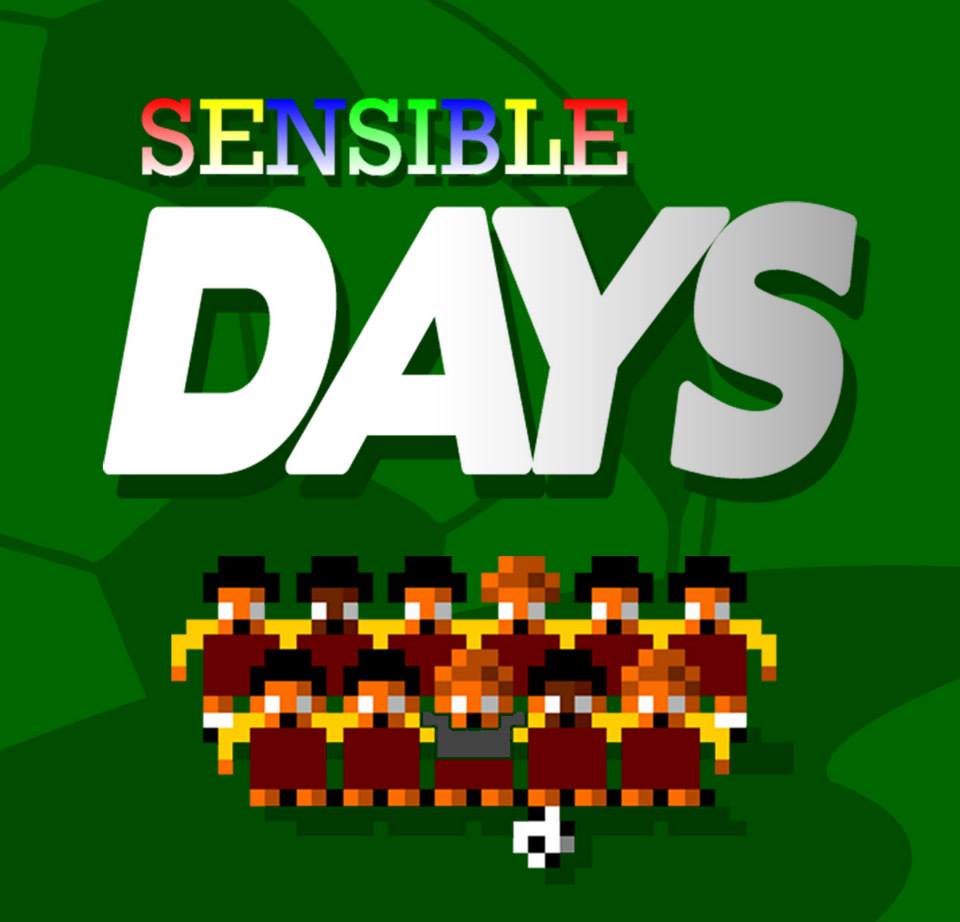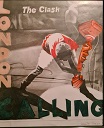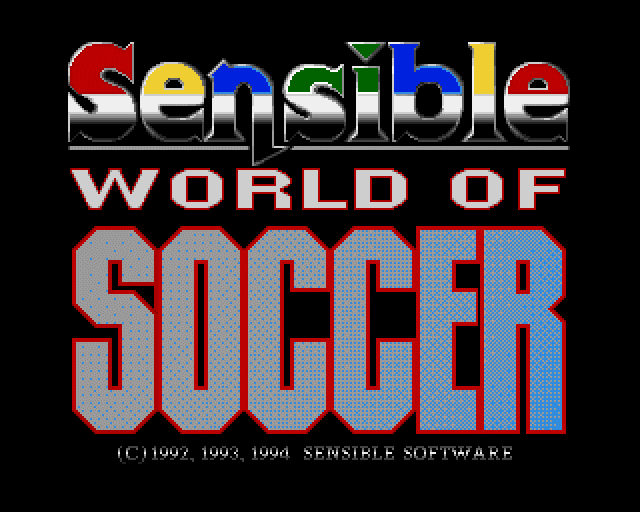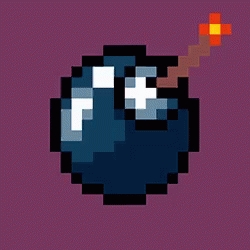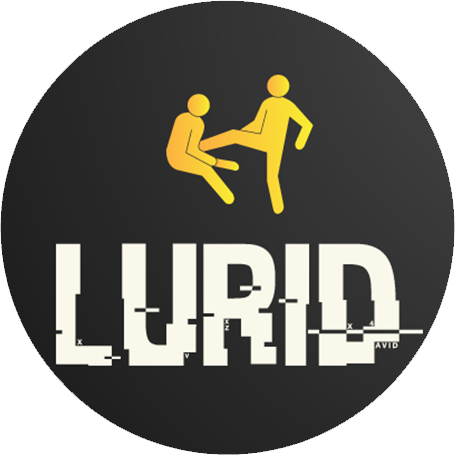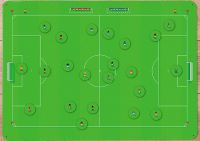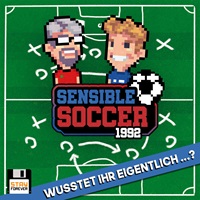EDGE - The Making of.... Sensible Soccer
18 years 8 months ago #19005
by Tufo
EDGE - The Making of.... Sensible Soccer was created by Tufo
OK so by popular request  Here it is, as taken from Edge magazine here in the UK. Not sure how much new information (if any) it will have for the devoted SWOS fans of this forum, but hopefully it will still be an interesting read for you all. Here goes:
Here it is, as taken from Edge magazine here in the UK. Not sure how much new information (if any) it will have for the devoted SWOS fans of this forum, but hopefully it will still be an interesting read for you all. Here goes:
There are probably more videogames of the footballing ilk than any other. But for all the FIFAs, Kick Offs Championship Managers and ISSes, there s still one title that holds a special place in gamers hearts...
The year is 1992. Sanctions would soon force Yugoslavia out of the European Cup (sic), and the FA Premier League was about to begin its first controversial season, but by far the most significent event in football that year - if not the decade - was taking place in a small set of offices in March, Cambridgeshire; the offices of Sensible Software.
It began the year before. The six staff at Sensible, already one of the top development teams on the Amiga 500, were in a long and difficult final stage of development for their new god game, Mega-Lo-Mania. The game had originally been based around space technology, but - inspired by Peter Molyneux s Populus - Sensible made a last-minute decision to set the game on a fictional planet, base it loosely around the history of English warfare and add tiny little men to roam over the land.
It was the toughest end development phase I can ever remember , recalls Jon Hare, Sensible Soccer artist, designer and Sensible Software co-founder. The game just needed to be tuned, it was all about resource management, and it was really difficult - serious long hours for a long, long time.
To relax, the six of them played a lot of Kick Off II. Anco s football game was far from perfect though, as the close perspective meant you frequently couldn t see who you were passing to, and the suspense often arose from the game s infamous bugs instead of from the skill of the players: would your goalkeeper fall asleep, or would the game hang? THe problems grated on the Sensible team.
Then, one stressed afternoon, Hare decided the hard-working populus of their new game needed a break too, so for a bit of light relief he dressed 22 of the Mega-Lo-Mania sprites for a game of football. It took me ten minutes, a laid-back Hare remembers. I d been making the Romans, and the cavemen, and then we stuck them in football kits. The development team put the men on a patch of hastily knocked-up turf, and we saw the perspective was good: you could see more of the pitch.
They kept the up-down scrolling, added a ball, and fairly soon they were having a kickabout. Within a month, Sensible Software had a publishing deal for its new title: Sensible Soccer.
Released just in time for the European Championships, the game quickly became a universal favourite, scoring above 90 per cent in almost every magazine review, and Game of the Year in a string of Amiga publications. There had been football games before: the fixed-perspective top-down view and up-down scrolling were familiar; but the scale of the men - just 12 pixels high - meant you could see far more of the pitch when playing. Taking a corner you could now see your players in position around the goal. You could boot the ball forward and know someone was there to receive the pass. Like in the real game, attacks had to be built, mistakes were punished and it only took a second to score. And at the end of the day, it was the team with the most goals who won.
At the heart of Sensible Soccer s appeal was the intuitive and flexible control system. The unique after-touch facility gave you unprecedented control over the ball: in the moment after a kick, a tap towards another direction added spin or lift; sideways for a curved shot, back for an up-and-under. The system worked without possession too; you could dive into a sliding tackle, angle the joystick, and redirect the ball towards your well-placed striker. The quicker the after-touch was applied, the more exaggerated the resultant bend. Ball control got harder the faster you ran, and at full tilt an overly rapid change of direction often meant losing possession. They were simple ideas, but in combination the flexibility seemed endless, and the skilful moves seemed to echo the real skills of professional football.
Hare ascribes the fluidity of the controls to Sensible s informal attitude to development. It was trial and error, he says. You can t write a control system down on paper. If the control system doesn t work, you have to change it, and if you change the control system, sometimes you have to change the whole game. So it s really an organic process. Around the pitch, Sensible built a menu system which provided the usual control over the circumstances of the match; you could choose from eight formations, swap players, and choose the length from three to ten minute games - ten minutes being, as always, a long time in football. During the match, three taps on your joystick called up the bench where you could substitute players or reassess your formation. The game offered instant replays, collected into highlights, and you could even save a batch of highlights to show at the weekend, for that Match of the Day moment.
But the main feature that set Sensible Soccer apart was the new distant perspective and the space that it afforded. Hare agrees: The game works because there s a lot of space to pass into. When you play football football, you re not looking at yourself. You re looking at what your re going to do with the ball. You re thinking, I ve got half a second before this guy s running into me: where can I kick it? Despite being only 12 pixels high, the players were - in their bug-eyed, cartoon way - absolutely convincing, even seeming to open their mouths in appeal after a foul. However, as is often the case, most of this detail was an illusion. Sensible Soccer was just a guy in three frames: legs together, then right leg forward, then left leg forward, explains Hare. People would say, He s chesting it down, he s volleying... What happened was the ball would hit him about chest height and he d kick it. The ball was just three frames too. The thing with football is that you know it well, and your head fills in the gaps.
Space was key, too, in the amount of context left out. A lot of what you don t do is as important as what you do do, outlines Hare. If we had put specific chants in certain stadiums, then people would have noticed the chants aren t there in other stadiums. If you ve got this general chant going on in the background, people might imagine at Anfield they re singing You ll Never Walk Alone . It s general and ambiguous, and your brain fills in the rest.
Where details were included, Sensible took great care to make sure they were accurate. The game was the firs to use real teams and player names. Sensible had one contractor, a European football journalist whose sole responsibility was to ensure players were up to date. It s important to draw people in, says Hare. When you have a lot of real footballers, like we did, people start to care about individual players on each team. People swore they could control the goalkeeper, when they couldn t. Or they swore this player was better than that player. What you have to do is give people space to believe it.
The illusion of reality and smooth flow of play was supported by a whole range of subtle behind-the-scenes touched, again developed through trial and error, as Hare explains: If you are pushing directly up the pitch, but the ball is actually 15 degrees off, the game will point you towards the ball. It s really helping a lot; bringing supporting players in, taking them out of position, in order to keep the game flowing without the player realising.
The heuristics the team used for the computer s tactics were basic and effective: each player was assigned a box, and his position within that box was determined by the location of the ball on the pitch. All that remained was to time when the computer players tackled, when they took shots and when they passed the ball. Hare remembers: It was all quite simple, really. In fact - surprisingly, given the game s reputation for innovation - the development team is of the opinion that Sensible Soccer had little that was technically new. Hare calles it a bread and butter game : It s just a football game, know what I mean?
But to the game s millions of fans (1.5m units were sold, and Hare estimates the ratio of pirated copies to originals at ten-to-one) Sensible Soccer was always more than just a football game. Sensible set its stall out early doors, and then pressed its advantage home: a string of almost yearly updates kept the teams up to date, and added new features to tweak the gameplay. With release 1.1 the goalie was more responsive; there were red and yellow cards; even different pitches (a dodgy pitch being a great leveller). Later refinements were to include Sensible World Of Soccer, with 1,500 teams, 20,000 players, and a career mode for managing a team; and even Sensible Soccer 98, with 3D perspectives. But the original Sensible Soccer was always the one that would go down in history.
Is there anything in the original game people still might not have figured out? Hare is an ardent Norwich fan, and he admits to fixing the figures a little: I think we did tend to favour our own teams a bit. Players I liked, my favourite Norwich players, I probably tweaked the stats up a bit, because I like them. You ve got to. You don t want your favourite guy out there looking like a monkey. No, especially not one 12 pixels high.
There are probably more videogames of the footballing ilk than any other. But for all the FIFAs, Kick Offs Championship Managers and ISSes, there s still one title that holds a special place in gamers hearts...
The year is 1992. Sanctions would soon force Yugoslavia out of the European Cup (sic), and the FA Premier League was about to begin its first controversial season, but by far the most significent event in football that year - if not the decade - was taking place in a small set of offices in March, Cambridgeshire; the offices of Sensible Software.
It began the year before. The six staff at Sensible, already one of the top development teams on the Amiga 500, were in a long and difficult final stage of development for their new god game, Mega-Lo-Mania. The game had originally been based around space technology, but - inspired by Peter Molyneux s Populus - Sensible made a last-minute decision to set the game on a fictional planet, base it loosely around the history of English warfare and add tiny little men to roam over the land.
It was the toughest end development phase I can ever remember , recalls Jon Hare, Sensible Soccer artist, designer and Sensible Software co-founder. The game just needed to be tuned, it was all about resource management, and it was really difficult - serious long hours for a long, long time.
To relax, the six of them played a lot of Kick Off II. Anco s football game was far from perfect though, as the close perspective meant you frequently couldn t see who you were passing to, and the suspense often arose from the game s infamous bugs instead of from the skill of the players: would your goalkeeper fall asleep, or would the game hang? THe problems grated on the Sensible team.
Then, one stressed afternoon, Hare decided the hard-working populus of their new game needed a break too, so for a bit of light relief he dressed 22 of the Mega-Lo-Mania sprites for a game of football. It took me ten minutes, a laid-back Hare remembers. I d been making the Romans, and the cavemen, and then we stuck them in football kits. The development team put the men on a patch of hastily knocked-up turf, and we saw the perspective was good: you could see more of the pitch.
They kept the up-down scrolling, added a ball, and fairly soon they were having a kickabout. Within a month, Sensible Software had a publishing deal for its new title: Sensible Soccer.
Released just in time for the European Championships, the game quickly became a universal favourite, scoring above 90 per cent in almost every magazine review, and Game of the Year in a string of Amiga publications. There had been football games before: the fixed-perspective top-down view and up-down scrolling were familiar; but the scale of the men - just 12 pixels high - meant you could see far more of the pitch when playing. Taking a corner you could now see your players in position around the goal. You could boot the ball forward and know someone was there to receive the pass. Like in the real game, attacks had to be built, mistakes were punished and it only took a second to score. And at the end of the day, it was the team with the most goals who won.
At the heart of Sensible Soccer s appeal was the intuitive and flexible control system. The unique after-touch facility gave you unprecedented control over the ball: in the moment after a kick, a tap towards another direction added spin or lift; sideways for a curved shot, back for an up-and-under. The system worked without possession too; you could dive into a sliding tackle, angle the joystick, and redirect the ball towards your well-placed striker. The quicker the after-touch was applied, the more exaggerated the resultant bend. Ball control got harder the faster you ran, and at full tilt an overly rapid change of direction often meant losing possession. They were simple ideas, but in combination the flexibility seemed endless, and the skilful moves seemed to echo the real skills of professional football.
Hare ascribes the fluidity of the controls to Sensible s informal attitude to development. It was trial and error, he says. You can t write a control system down on paper. If the control system doesn t work, you have to change it, and if you change the control system, sometimes you have to change the whole game. So it s really an organic process. Around the pitch, Sensible built a menu system which provided the usual control over the circumstances of the match; you could choose from eight formations, swap players, and choose the length from three to ten minute games - ten minutes being, as always, a long time in football. During the match, three taps on your joystick called up the bench where you could substitute players or reassess your formation. The game offered instant replays, collected into highlights, and you could even save a batch of highlights to show at the weekend, for that Match of the Day moment.
But the main feature that set Sensible Soccer apart was the new distant perspective and the space that it afforded. Hare agrees: The game works because there s a lot of space to pass into. When you play football football, you re not looking at yourself. You re looking at what your re going to do with the ball. You re thinking, I ve got half a second before this guy s running into me: where can I kick it? Despite being only 12 pixels high, the players were - in their bug-eyed, cartoon way - absolutely convincing, even seeming to open their mouths in appeal after a foul. However, as is often the case, most of this detail was an illusion. Sensible Soccer was just a guy in three frames: legs together, then right leg forward, then left leg forward, explains Hare. People would say, He s chesting it down, he s volleying... What happened was the ball would hit him about chest height and he d kick it. The ball was just three frames too. The thing with football is that you know it well, and your head fills in the gaps.
Space was key, too, in the amount of context left out. A lot of what you don t do is as important as what you do do, outlines Hare. If we had put specific chants in certain stadiums, then people would have noticed the chants aren t there in other stadiums. If you ve got this general chant going on in the background, people might imagine at Anfield they re singing You ll Never Walk Alone . It s general and ambiguous, and your brain fills in the rest.
Where details were included, Sensible took great care to make sure they were accurate. The game was the firs to use real teams and player names. Sensible had one contractor, a European football journalist whose sole responsibility was to ensure players were up to date. It s important to draw people in, says Hare. When you have a lot of real footballers, like we did, people start to care about individual players on each team. People swore they could control the goalkeeper, when they couldn t. Or they swore this player was better than that player. What you have to do is give people space to believe it.
The illusion of reality and smooth flow of play was supported by a whole range of subtle behind-the-scenes touched, again developed through trial and error, as Hare explains: If you are pushing directly up the pitch, but the ball is actually 15 degrees off, the game will point you towards the ball. It s really helping a lot; bringing supporting players in, taking them out of position, in order to keep the game flowing without the player realising.
The heuristics the team used for the computer s tactics were basic and effective: each player was assigned a box, and his position within that box was determined by the location of the ball on the pitch. All that remained was to time when the computer players tackled, when they took shots and when they passed the ball. Hare remembers: It was all quite simple, really. In fact - surprisingly, given the game s reputation for innovation - the development team is of the opinion that Sensible Soccer had little that was technically new. Hare calles it a bread and butter game : It s just a football game, know what I mean?
But to the game s millions of fans (1.5m units were sold, and Hare estimates the ratio of pirated copies to originals at ten-to-one) Sensible Soccer was always more than just a football game. Sensible set its stall out early doors, and then pressed its advantage home: a string of almost yearly updates kept the teams up to date, and added new features to tweak the gameplay. With release 1.1 the goalie was more responsive; there were red and yellow cards; even different pitches (a dodgy pitch being a great leveller). Later refinements were to include Sensible World Of Soccer, with 1,500 teams, 20,000 players, and a career mode for managing a team; and even Sensible Soccer 98, with 3D perspectives. But the original Sensible Soccer was always the one that would go down in history.
Is there anything in the original game people still might not have figured out? Hare is an ardent Norwich fan, and he admits to fixing the figures a little: I think we did tend to favour our own teams a bit. Players I liked, my favourite Norwich players, I probably tweaked the stats up a bit, because I like them. You ve got to. You don t want your favourite guy out there looking like a monkey. No, especially not one 12 pixels high.
Please Log in or Create an account to join the conversation.
18 years 8 months ago #19236
by Gloam
Replied by Gloam on topic Re: EDGE - The Making of.... Sensible Soccer
Thanks so much Tufo! I ve been wanting to read that for ages 
Please Log in or Create an account to join the conversation.
17 years 1 month ago #53193
by Kyon
Replied by Kyon on topic Re: EDGE - The Making of.... Sensible Soccer
Very good infos thanks
Please Log in or Create an account to join the conversation.
Time to create page: 0.213 seconds



















